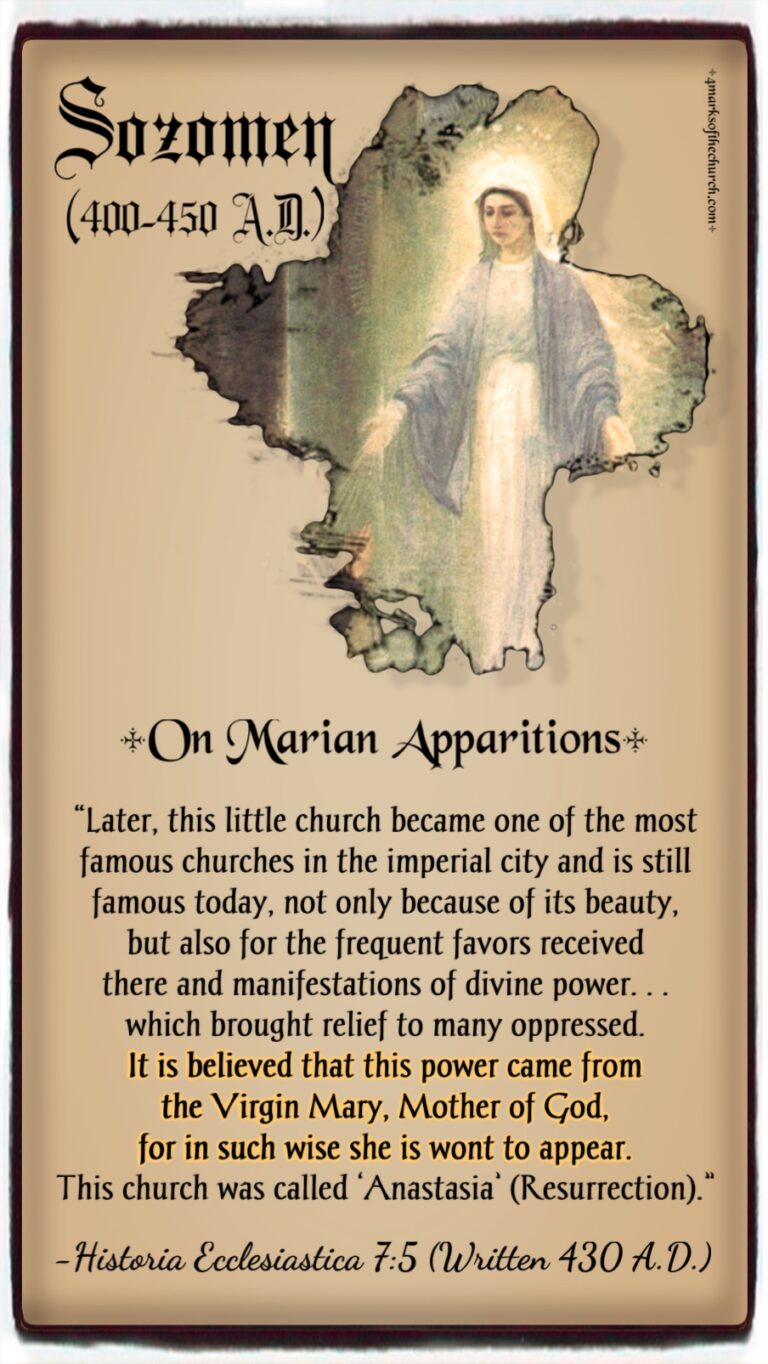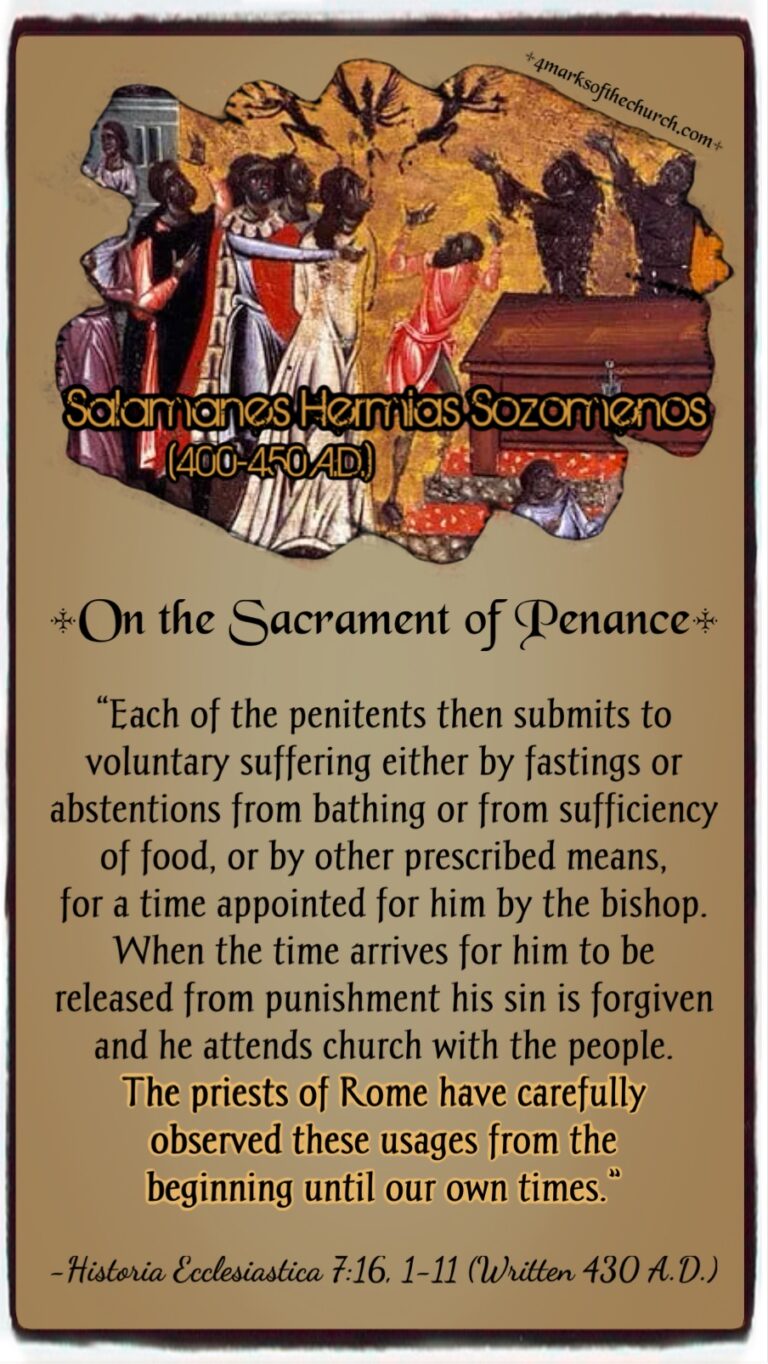Sozomen
Scroll for quotes→



Sozomen (400-450), also known as Salamanes Hermias Sozomenos, was a Roman lawyer and historian of the Christian Church. What he has to tell us of the history of Southern Palestine was derived from oral tradition. Sozomen wrote that his grandfather lived at Bethelia, near Gaza, and became a Christian together with his household, probably under Constantius II. A neighbor named Alaphrion was miraculously healed by Saint Hilarion who cast out a demon from Alaphrion, and, as eyewitnesses to the miracle, his family converted, along with Alaphrion’s. As an adult Sozomen acquired training as a lawyer. He studied law in Beirut.
Sozomen wrote two works on church history, of which only the second one is extant. His first work covered the history of the Church, from the Ascension of Jesus to the defeat of Licinius in 323, in twelve books. His sources for it included Eusebius of Caesarea, the Clementine homilies, Hegesippus, and Sextus Julius Africanus. Sozomen’s second work continues approximately where his first work left off. He wrote it in Constantinople, around the years 440 to 443 and dedicated it to Emperor Theodosius II. The work is structured into nine books, roughly arranged along the reigns of Roman Emperors.
Writings:
- Ecclesiastical History Book I: from the conversion of Constantine I until the Council of Nicea (312–325)
- Ecclesiastical History Book II: from the Council of Nicea to Constantine’s death (325–337)
- Ecclesiastical History Book III: from the death of Constantine I to the death of Constans I (337–350)
- Ecclesiastical History Book IV: from the death of Constans I to the death of Constantius II (350–361)
- Ecclesiastical History Book V: from the death of Constantius II to the death of Julian the Apostate (361–363)
- Ecclesiastical History Book VI: from the death of Julian to the death of Valens (363–375)
- Ecclesiastical History Book VII: from the death of Valens to the death of Theodosius I (375–395)
- Ecclesiastical History Book VIII: from the death of Theodosius I to the death of Arcadius (395–408).
- Ecclesiastical History Book IX: from the death of Arcadius to the accession of Valentinian III (408–25).
return to top ⇑
Quotes and Excerpts:
At that time the Arians, led by Demophilus, still controlled the
churches; Gregory of Nazianzus, however, led those who still professed their faith in the consubstantial Trinity. There was a little house that had been transformed into a church entrusted to
Gregory. . . Later, this little church became one of the most
famous churches in the imperial city and is still famous today, not only because of its beauty, but also for the frequent favors received there and manifestations of divine power. . . which brought relief to many oppressed. It is believed that this power came from the Virgin Mary, Mother of God, for in such wise she is wont to appear. This church was called ‘Anastasia’ (Resurrection).”
-Historia Ecclesiastica 7:5
“About this time Nectarius, in charge of the Church of Constantinople, first abolished the office of the presbyter imposing penances. His example was followed by bishops everywhere. As to the nature and origin of the office, and the cause of its being abolished, some have said one thing and others another. I shall tell what I think about it.
Because to be entirely without sin belongs more to divine than to human nature, God has decreed that pardon is to be extended to those who repent even after many tansgressions. Since in asking pardon it is necessary to confess the sin, it seems likely that
from the very beginning priests saw that it was burdensome for the people to confess their sins in public and with the whole church as witness. So they appointed a presbyter who could conduct himself with the utmost self-control and prudence to be in charge of this. It was to him that the penitents went to confess their transgressions. His was the task of assessing the penalty that had to be exacted for each sin and, when satisfaction had
been made, of absolving them.
This never was required by the Novatians, who do not believe in penance; but it has prevailed even to the present time among all other heretics, and is diligently observed in the Western Churches, especially in that of Rome. There a special place is set aside for those who are in penance, where they stand mourning and weeping as it were, until the completion of the Divine Liturgy, not being privileged to participate with the initiate, the while they throw themselves prostrate on the ground, with groaning and lamentation.
The bishop conducts the ceremony, faces them weeping, and likewise prostrates himself on the pavement, while the whole church bursts into tears and weeps aloud. After this the bishop is the first to stand up and he raises up the others who are prostrate. He prays on behalf of the repentant sinners and then dismisses them.
Each of the penitents then submits to voluntary suffering either by fastings or abstentions from bathing or from a sufficiency of food, or by other prescribed means, for a time appointed for him by the bishop. When the time arrives for him to be released from
punishment his sin is forgiven and he attends church with the people. The priests of Rome have carefully observed these usages from the beginning until our own times.
In the Church of Constantinople a presbyter was appointed to have charge of the penitents until a woman of nobility gave a deposition that when she, because of her sins, presented herself before this presbyter to fast and to beseech God, and when she tarried in the church for this purpose, an attempt to rape her had been made by a man who was a deacon.
Inasmuch as the people learned of this, there was great distress because of the disgrace to the Church; and sacred things were much calumniated. After hesitating as to what must be done Nectarius finally decided to depose the deacon; and at the advice of certain persons who urged that each individual should be able to examine his own conscience and confidently communicate in the Mysteries, he abolished the office of the presbyter penitentiary.
From that time until the present this order has prevailed over the most ancient usage; and, it seems to me, great laxity of principle has been substituted for the severity and rigor of antiquity. Under the ancient system, I think, offences were of less frequent occurrence; for people were deterred from sinning by reason of their dread of confessing their sins and of exposing them to the scrutiny of a severe judge.
It was for this same reason, I think, that the Emperor Theodosius, always zealous in promoting the honor of the Church, enacted the law forbidding women, unless they had had children and were over sixty years of age, to be accepted into the diaconate, in accord with the precept of the Aposile [Paul], and decreeing that women who shaved their heads were to be expelled from the churches, while the bishops who admitted such women were to be deposed from the episcopate.”
-Historia Ecclesiastica 7:16, 1-11
return to top ⇑